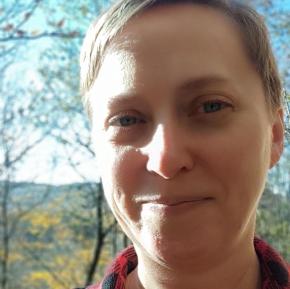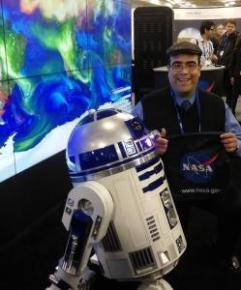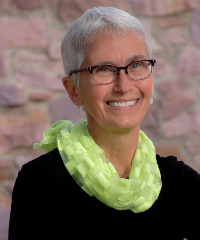Community Blogs
Community Blogs
Discover how the GLOBE community is engaging in all things GLOBE through the community blog posts below.
Learn how to create a GLOBE community blog post.
Filter By:
Blogs List
Details of today's weather is here Scientists can get ideas for
announcing future. This detail can help us to get future atmosphere.
Temprature, humidity, cloud cover, wind velicityand it's direction,
barometric pressure, precipitation etc. are the main feathers given in
this screenshot. Scientists may be able to get future weather reports now.
Read More »
Posted in:
During winter after five days the Sun is shining so the people are
getting relax from cold waves. In the sky there is clear sky and
temprature is 22 degree c. Now
Posted in:
There are four winter months in India oct, nov, dec,and jan. are the
months for winter. During January there is continu dense fog in the
sky every year. Due to fog whole day Sun light is not available. The
dense fog is for a weak too. Air temprature is 4 degree C. at night in
planes. In hill stations it is 0 degree c. Life is in danger during
winter. Schools and colleges are closed due to cold waves in India.
Posted in:
Curriculum:
EDUCATION RESEARCH
GLOBE International STEM Network (GISN):
GLOBE INTERNATIONAL STEM NETWORK (GISN)
During winter there is is fog in India daily.
Posted in:
The New Hampshire GLOBE Partnership, based at the Leitzel Center at
the University of New Hampshire, is increasing our visibility to our
New Hampshire audience. We recently added some basic webpages to the
UNH
Leitzel Center website .
We hope this helps educators in New Hampshire find us and engage with
the GLOBE Program.
How are others in the GLOBE community reaching out to your audiences?
We'd love to hear your ideas!
Posted in:
La Nube is El Paso’s newest interactive science museum that opened
this August 2024, and GLOBE’s official partner, the El Paso Community
College (EPCC) and the Gene Roddenberry Planetarium provided fun and
educational activities for a Fall camp for middle schoolers. This
three-day camp provided interactive projects for these young students
to learn more about science. La Nube provided various interactive
demonstrations on atmospheric processes and desert environments. The
Gene Roddenberry Planetarium group headed by Evelyn Maldonado, an
official NASA Solar System ...
Posted in:
The El Paso Community College (EPCC) – Transmountain campus hosted
3rd Earth Science Day Event on October 16th with the main theme being
Earth Science Everywhere . The aim was to help the public
understand how weather, climate, natural resources and other
geological processes affect our everyday lives and decision making in
the El Paso region.
EPCC embarked on this event in tandem with the American Geosciences
Institute’s (AGI) annual Earth Science Week: a time designated to
promote geoscience awareness across our nation. Here is an excerpt on
AGI’s focus for this ...
Posted in:
Discover the Wonders of the World’s Forests!
Greetings, middle and high school educators! Are you ready to bring
the wonders of forests into your classroom? Dive into this blog series
that bridges the resources of Natural Inquirer and the GLOBE Program,
designed to inspire curiosity, scientific exploration, and
environmental stewardship among your students.
GLOBE and Natural Inquirer Crosswalk
This series is part of the
GLOBE
and Natural Inquirer Crosswalk Project , which connects the
hands-on science of the GLOBE Program with the captivating research
found ...
Posted in:
Curriculum:
SCIENCE AND MATH
GLOBE Science Topics:
CLIMATE
CLIMATE CHANGE
EARTH AS A SYSTEM
Investigation Areas:
EARTH AS A SYSTEM
PRECIPITATION
AIR TEMPERATURE
SURFACE TEMPERATURE
BIOMETRY (INCLUDING TREE HEIGHT)
LAND COVER CLASSIFICATION
CARBON CYCLE
Primary Audience:
TEACHERS
Teacher's Guide:
MIDDLE: 6-8
SECONDARY: 9-12
Audience
Middle school and high school
Time
Approximately 2 class periods: one for reading the Natural Inquirer
inquiry and reviewing images and charts, and one for using the GLOBE resources.
Day 1 : Dive into The World’s Forests 2 inquiry, exploring
images and data.
Day 2 : Apply your learning with GLOBE resources for hands-on discovery.
Materials
The
World’s Forests 2 (pdf), Inquiry 1
Earth
System Poster learning activities (pdf)
Analyzing
Global Patterns with the Earth System Satellite Images (see ...
Posted in:
Curriculum:
SCIENCE AND MATH
GLOBE Science Topics:
CLIMATE
GLOBE PROTOCOLS
EARTH AS A SYSTEM
Investigation Areas:
PRECIPITATION
BIOMETRY (INCLUDING TREE HEIGHT)
LAND COVER CLASSIFICATION
Primary Audience:
TEACHERS
Teacher's Guide:
MIDDLE: 6-8
SECONDARY: 9-12
Audience
Middle school and high school
Time
Approximately 2 class periods:
Day 1 : Dive into the fascinating world of biodiversity
through reading, exploring images, and analyzing charts.
Day 2 : Apply what you've learned by engaging with GLOBE
resources and interactive tools.
Materials
The
World’s Forests 2 (pdf), Inquiry 2
Earth
System Poster learning activities (pdf)
Analyzing
Global Patterns with the Earth System Satellite Images (see
text for instructions)
Optional: GLOBE Protocols ...
Posted in:
Curriculum:
SCIENCE AND MATH
GLOBE Science Topics:
CLIMATE
EARTH AS A SYSTEM
Investigation Areas:
BIOMETRY (INCLUDING TREE HEIGHT)
Primary Audience:
TEACHERS
Teacher's Guide:
MIDDLE: 6-8
SECONDARY: 9-12
Exploring the Benefits of Forests: A Dynamic Learning Experience for Middle and High School Students
Audience
Middle school and high school
Time
Approximately 2 class periods:
Day 1 : Dive into readings and analyze charts and images from
The World’s Forests 2.
Day 2 : Use GLOBE resources to bring learning to life through
hands-on exploration.
Materials
The
World’s Forests 2 (pdf), Inquiry 3
Earth
System Poster learning activities (pdf)
Analyzing
Global Patterns with the Earth System Satellite Images (see
text for instructions)
Optional: GLOBE Protocols
Surface ...
Posted in:
Curriculum:
SCIENCE AND MATH
GLOBE Science Topics:
CLIMATE
GLOBE PROTOCOLS
Investigation Areas:
SURFACE TEMPERATURE
Primary Audience:
TEACHERS
Teacher's Guide:
MIDDLE: 6-8
SECONDARY: 9-12
Audience
Middle school and high school
Time
Approximately 2 class periods:
Day 1 : Explore the role of forests in the carbon cycle
through reading and analyzing charts and images.
Day 2 : Engage with GLOBE resources and interactive learning
tools for hands-on discovery.
Materials
The
World’s Forests 2 (pdf), Inquiry 4
Carbon
Travels Game (pdf)
Optional: GLOBE Carbon
Cycle protocols
Optional: My NASA Data pacing guide Trees
and the Carbon Cycle (pdf)
What do the world’s forests have to ...
Posted in:
Curriculum:
SCIENCE AND MATH
GLOBE Science Topics:
CLIMATE
CLIMATE CHANGE
GLOBE PROTOCOLS
EARTH AS A SYSTEM
Investigation Areas:
CARBON CYCLE
Primary Audience:
TEACHERS
Teacher's Guide:
MIDDLE: 6-8
SECONDARY: 9-12
Audience
Middle school and high school
Time
Approximately 2 class periods:
Day 1 : Analyze the Natural Inquirer inquiry, focusing on
charts and text.
Day 2 : Use GLOBE tools to explore real-world data and trends.
Materials
The
World’s Forests 2 (pdf), Inquiry 5
Data
Visualization System
Advanced
Data Access Tool
Steps
in the Scientific Process
How well are we managing our forests worldwide?
Forest managers take many factors into consideration when making
decisions. In recent ...
Posted in:
Curriculum:
SCIENCE AND MATH
GLOBE Science Topics:
CLIMATE
CLIMATE CHANGE
GLOBE PROTOCOLS
EARTH AS A SYSTEM
Primary Audience:
TEACHERS
Teacher's Guide:
MIDDLE: 6-8
SECONDARY: 9-12
Mis queridos lectores los invito a consultar el siguiente artículo
publicado este año por la revista Palobra de la Universidad de
Cartagena (Colombia).
https://revistas.unicartagena.edu.co/index.php/palobra/search/authors/view?givenName=Delimiro&familyName=Navarro%20Arrieta&affiliation=Instituci%C3%B3n%20Educativa%20de%20Gambote&country=CO&authorName=Navarro%20Arrieta%2C%20Delimiro
El cual permite difundir los resultados de un proyecto maravilloso en
el que la investigación dirigida es la estrategia pedagógica
implementada para potenciar las competencias ...
Posted in:
Curriculum:
EDUCATION RESEARCH
STEM
GLOBE International STEM Network (GISN):
GLOBE INTERNATIONAL STEM NETWORK (GISN)
GLOBE Mission Earth News:
STUDENT RESEARCH & ACTIVITIES
GLOBE Science Topics:
DATA INCLUDED
GLOBE PROTOCOLS
Investigation Areas:
HYDROSPHERE
This
project is all about mixing the personal stories of citizen
scientists with 30 years of the GLOBE (Global Learning and
Observations to Benefit the Environment) program. It combines
these two sources, as well as other data sources, to get a
complete picture of how our environment change
This
is the first year for the Climate Chronicle activity. Explore
th e collection of Climate
Chronicles from the 2024 virtual ...
Posted in:
Our project for SEES 2024 was "Creating a Model to Identify
High-Risk Areas for Flash Flooding in Houston, Texas." In this
blog, I will discuss how we calculated which areas are "high-risk."
There are many ways to identify the most at-risk points of flooding
in a given region. Such points are commonly identified in a flood map,
such as the one here:
For our project, we decided to look at elevation data, which is
perhaps the most intuitive: water flows downhill and will accumulate
in the lowest regions. To get our elevation data, we used ...
Posted in:
GLOBE Science Topics:
CLIMATE CHANGE
EARTH AS A SYSTEM
EARTH SYSTEM SCIENCE
Investigation Areas:
EARTH AS A SYSTEM
BIOSPHERE
LAND COVER CLASSIFICATION
Primary Audience:
SCIENTISTS
STUDENTS
TEACHERS
Student Research Reports:
MISSION MOSQUITO REPORT
SEES 2024 Experience
Getting the opportunity to participate in the NASA SEES Earth System
Explorers program has positively impacted my educational and career
journey in more ways than I could've imagined. Throughout this
internship, I gained an immense amount of knowledge in Earth science,
utilizing the GLOBE Observer app, ArcGIS, Collect Earth Online,
Python, and many other tools to better understand the environment
around us. During the last few weeks of the program, a team of seven
other interns and I completed our own research project called
"Harnessing ...
Posted in:
GLOBE Science Topics:
EARTH AS A SYSTEM
Investigation Areas:
EARTH AS A SYSTEM
LAND COVER CLASSIFICATION
MOSQUITOES
Primary Audience:
SCIENTISTS
STUDENTS
TEACHERS
Student Research Reports:
MISSION MOSQUITO REPORT
In this blog post, I will go through every step of the internship and
outline my experience!
Before I do that, first of all, I would like to say that I am so
happy that I got to spend my summer with SEES! This program was so
amazing and helped guide me a bit more on what I want to do in my
future career and in college! I am very grateful for all of our
mentors who guided us through the program and provided great knowledge
and support to all of us! Thank you for this opportunity.
Modules: Climate Science Background and Exploring the Earth
To prepare for the ...
Posted in:
GLOBE Science Topics:
EARTH AS A SYSTEM
Investigation Areas:
EARTH AS A SYSTEM
LAND COVER CLASSIFICATION
MOSQUITOES
Student Research Reports:
MISSION MOSQUITO REPORT
If you had asked me what “citizen science” was before this internship
with the NASA SEES ( STEM Enhancement in Earth Science ) Earth System
Explorers, I most likely would have conjured a description that
involved studying the human body. Now, however, I feel confident in
saying that citizen science is a dynamic, extraordinary meaningful
process by which everyday citizens contribute to real-world scientific
research. This internship allowed me to take on the roles of both a
citizen scientist and a researcher, deeply engaging with my local
community and environment while ...
Posted in:
GLOBE Science Topics:
DATA INCLUDED
EARTH AS A SYSTEM
Investigation Areas:
EARTH AS A SYSTEM
Primary Audience:
PARTNERS
SCIENTISTS
STUDENTS
TEACHERS
Student Research Reports:
MISSION MOSQUITO REPORT
The wildfire data analysis journey began with a dataset comprising
over 1200 points located in the California region. To uncover the
correlation between land cover types and wildfire risk, we first
needed to determine the wildfire risk for each point using the FEMA
Wildfire Risk Map. This step involved entering coordinates into the
software to obtain the wildfire risk index for each location. From
this dataset, we categorized approximately 325 points as having a very
low risk, 350 as moderate risk, and 578 as very high risk for
wildfires. These categories served as the ...
Posted in:
GLOBE Science Topics:
EARTH AS A SYSTEM
Investigation Areas:
EARTH AS A SYSTEM
LAND COVER CLASSIFICATION
Primary Audience:
SCIENTISTS
STUDENTS
TEACHERS
Student Research Reports:
MISSION MOSQUITO REPORT
—
20 Items per Page










